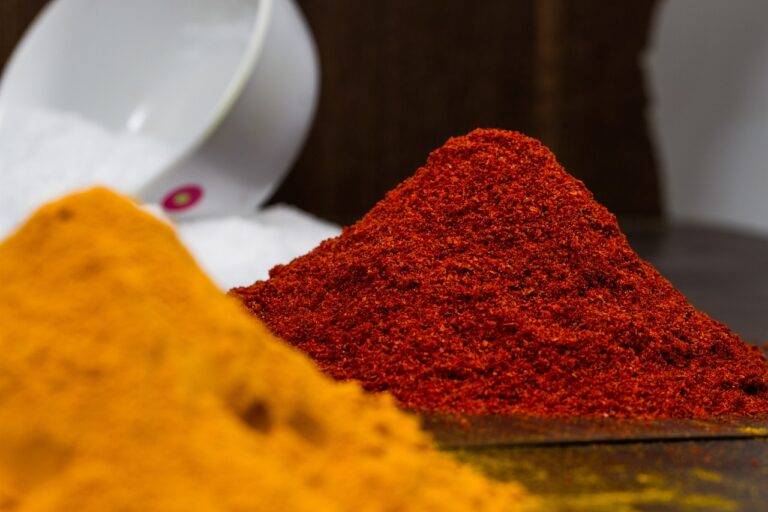Analyzing the Environmental Impact of Prepared Meal Packaging: Cricket 999.com login, 11xplay online, Betbhai9 id
cricket 999.com login, 11xplay online, betbhai9 id: Analyzing the Environmental Impact of Prepared Meal Packaging
In recent years, the demand for prepared meal delivery services has surged as people seek convenience in their busy lives. Companies like Blue Apron, HelloFresh, and Freshly have capitalized on this trend by offering ready-to-cook meal kits that are delivered right to your doorstep. While these services offer a convenient solution to meal planning and preparation, there is growing concern about the environmental impact of the packaging used to deliver these meals.
The packaging materials used for prepared meal delivery can have a significant impact on the environment. From the production of the materials to the disposal of the packaging, each step in the process can contribute to greenhouse gas emissions, waste generation, and other negative environmental effects. In this article, we will delve into the different aspects of prepared meal packaging and its environmental impact.
The Lifecycle of Prepared Meal Packaging
Before we can analyze the environmental impact of prepared meal packaging, it’s important to understand the lifecycle of these materials. The packaging used for meal delivery typically goes through several stages, including:
1. Production: The production of packaging materials involves the extraction of raw materials, manufacturing processes, and transportation. This stage can generate greenhouse gas emissions, water pollution, and other environmental issues depending on the materials used and the production methods employed.
2. Distribution: Once the packaging materials are produced, they need to be transported to the meal delivery service providers. This involves additional energy consumption and emissions, especially if the materials are sourced from distant locations.
3. Use: During the use stage, the packaging materials are used to package and protect the prepared meals during transit. The effectiveness of the packaging in preserving the food and preventing spoilage can impact food waste generation and environmental impact.
4. Disposal: After the meals are delivered, the packaging materials are disposed of by the consumers. Depending on the type of materials used, this can involve recycling, composting, or landfilling. Improper disposal can lead to pollution, littering, and other environmental problems.
Environmental Impact of Prepared Meal Packaging
Now that we understand the lifecycle of prepared meal packaging, let’s delve into the environmental impact of each stage:
1. Production: The production of packaging materials, such as plastic, cardboard, and foam, can have a significant environmental impact. For example, the production of plastic packaging involves the extraction of fossil fuels, energy-intensive manufacturing processes, and carbon emissions. Similarly, the production of cardboard and paper packaging can lead to deforestation, water pollution, and habitat destruction.
2. Distribution: The transportation of packaging materials to meal delivery service providers adds to the environmental impact. The use of fossil fuels in trucks, ships, and planes can contribute to greenhouse gas emissions, air pollution, and other environmental issues. Additionally, the packaging materials may need to be shipped from different locations, further increasing the carbon footprint of prepared meal delivery services.
3. Use: The use of packaging materials to protect and preserve prepared meals can impact food waste generation and environmental sustainability. Effective packaging can extend the shelf life of food, reduce spoilage, and prevent food waste. On the other hand, excessive or non-biodegradable packaging can contribute to waste generation and environmental pollution.
4. Disposal: The disposal of packaging materials after the meals are delivered is a critical aspect of the environmental impact of prepared meal packaging. Recycling, composting, and proper disposal methods can mitigate the environmental effects of packaging materials. However, improper disposal, such as littering or landfilling, can lead to pollution, habitat destruction, and other environmental problems.
Sustainable Packaging Solutions
Given the environmental impact of prepared meal packaging, it’s essential for meal delivery service providers to adopt sustainable packaging solutions. Here are some strategies that companies can implement to reduce the environmental impact of their packaging:
1. Use eco-friendly materials: Companies can switch to biodegradable, compostable, or recyclable materials for their packaging. Sustainable options include plant-based plastics, recycled cardboard, and paper packaging. By using eco-friendly materials, companies can reduce their carbon footprint and minimize waste generation.
2. Optimize packaging design: Companies can also optimize the design of their packaging to minimize material usage and waste. This can involve using smaller packaging, eliminating unnecessary components, and using lightweight materials. By reducing the amount of packaging used, companies can lower their environmental impact and save resources.
3. Encourage recycling and composting: Meal delivery service providers can educate consumers about the importance of recycling and composting their packaging materials. Companies can provide instructions on how to properly dispose of their packaging and promote sustainable disposal practices. By encouraging recycling and composting, companies can divert waste from landfills and reduce environmental pollution.
4. Implement reuse programs: Another sustainable packaging solution is to implement reuse programs for packaging materials. Companies can offer incentives for customers to return their packaging for reuse or provide reusable packaging options. By promoting reuse, companies can minimize waste generation and extend the lifecycle of their packaging materials.
5. Collaborate with suppliers: Companies can work with their suppliers to source eco-friendly materials and improve the sustainability of their packaging supply chain. By collaborating with suppliers, companies can ensure that their packaging materials meet environmental standards and reduce the overall environmental impact of their operations.
FAQs
Q: Are meal delivery services environmentally friendly?
A: While meal delivery services offer convenience, the environmental impact of their packaging can vary. Companies that use sustainable packaging materials and practices can reduce their environmental footprint.
Q: How can I reduce the environmental impact of prepared meal packaging?
A: You can reduce the environmental impact of prepared meal packaging by choosing companies that use eco-friendly materials, recycling or composting your packaging, and opting for reusable packaging options.
Q: What are some sustainable packaging materials?
A: Sustainable packaging materials include biodegradable plastics, recycled cardboard, plant-based materials, and compostable packaging options.
Q: Why is it important to consider the environmental impact of prepared meal packaging?
A: Considering the environmental impact of prepared meal packaging is important to reduce waste generation, greenhouse gas emissions, and pollution. By choosing sustainable packaging options, you can minimize your environmental footprint and contribute to a healthier planet.
In conclusion, the environmental impact of prepared meal packaging is a critical aspect to consider as we strive to reduce waste and minimize our carbon footprint. By adopting sustainable packaging solutions, meal delivery service providers can lower their environmental impact and promote a more eco-friendly approach to meal delivery. As consumers, we can also play a role in reducing the environmental impact of prepared meal packaging by choosing companies that prioritize sustainability and practicing responsible disposal methods. Together, we can make a positive impact on the environment and create a more sustainable future for all.







